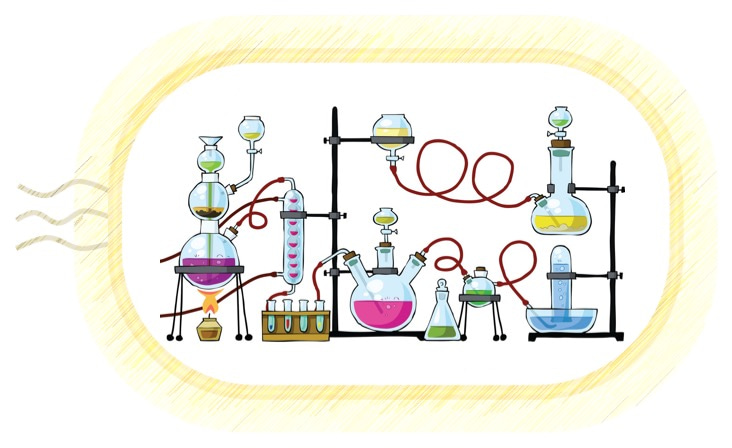
Enzymes are amazing catalysts, I never really had any doubt about that, and using them to make useful chemicals has been the goal of many great research groups for the last few decades. The focus has often been on making better enzymes, changing the substrate scope, changing the type of reactions, etc. A lot can be done now in this direction, but if you look at the number of enzymes really employed in industrial process, this is actually quite small. Yes, there are some excellent examples of highly successful engineering and real applications, but in comparison with traditional chemical processes there is an abyss.
In addition, the thought that biocatalysis was not that green after all, has gained momentum. What happens to all the water needed for the biotransformations? It's not clean water, surely it contains by-products (are they all really environmentally benign?), perhaps the enzyme itself, and maybe unreacted starting material. It all goes in the drain.
We really wanted to rethink how enzymes can be used, what can we do to bring biocatalysts to the forefront of catalysis? So we started to look into applications which could be really powerful tools and appealing for industrial processes.
We had a transaminase enzyme which was exceptionally robust which we had previously characterised, covalently immobilised, and demonstrated that if the immobilised biocatalyst was packed in a column, the catalysed reactions could be efficiently carried out in flow without any significant loss of activity for weeks. This was quite a breakthrough at the time because the flow rate we could achieve, and the longevity of the system were not easily matched by any other reported alternatives.
Although our strategy was good, we still were using a very simple system: a single enzyme which, while cofactor dependent (PLP), it had it tightly bound, was regenerated within the catalytic cycle, and only required minimal amount of PLP in the reaction media.
So we started increasing the complexity of the system, by assembling two to three enzymes and create effectively short artificial pathways. In this paper we successfully combined our transaminase with other ketoreductases (and possibly a third enzyme to recycle the NADH cofactor) to generate alcohols from amines. This is an interesting reaction, but the real application is that it can be done on biogenic amines. Biogenic amines, like dopamine, tryptamine and tyramine and natural metabolites which are transformed in vivo into the corresponding alcohols (with a variety of interesting properties). Synthetically however, those alcohol are pretty hard to make, certainly a challenge if you start from the cheap amines, because the aldehyde intermediate reacts with the amine starting material, killing your yield. In flow this does not happen and we prepared 3 of these alcohols in very good yields and very rapidly.
But the thing of the waste waters and the cofactors lost downstream was bugging us. So we looked at stripping the waters from some of the by-products by simply using an in line catch-and release column. The waters contained now only the cofactors we had put in at the beginning and could be recirculated extensively. Bingo! Now this is a system that works: costs are slashed and the environmental impact is negligible. Yes it is still quite simple, but shows that all the great enzymes that have been developed, can be put to good use by just cleverly assembling the best biocatalysts in an artificial enzymatic factory.

Full paper can be found here: http:/dx.doi.org/10.1038/s41929-018-0082-9

Please sign in or register for FREE
If you are a registered user on Research Communities by Springer Nature, please sign in